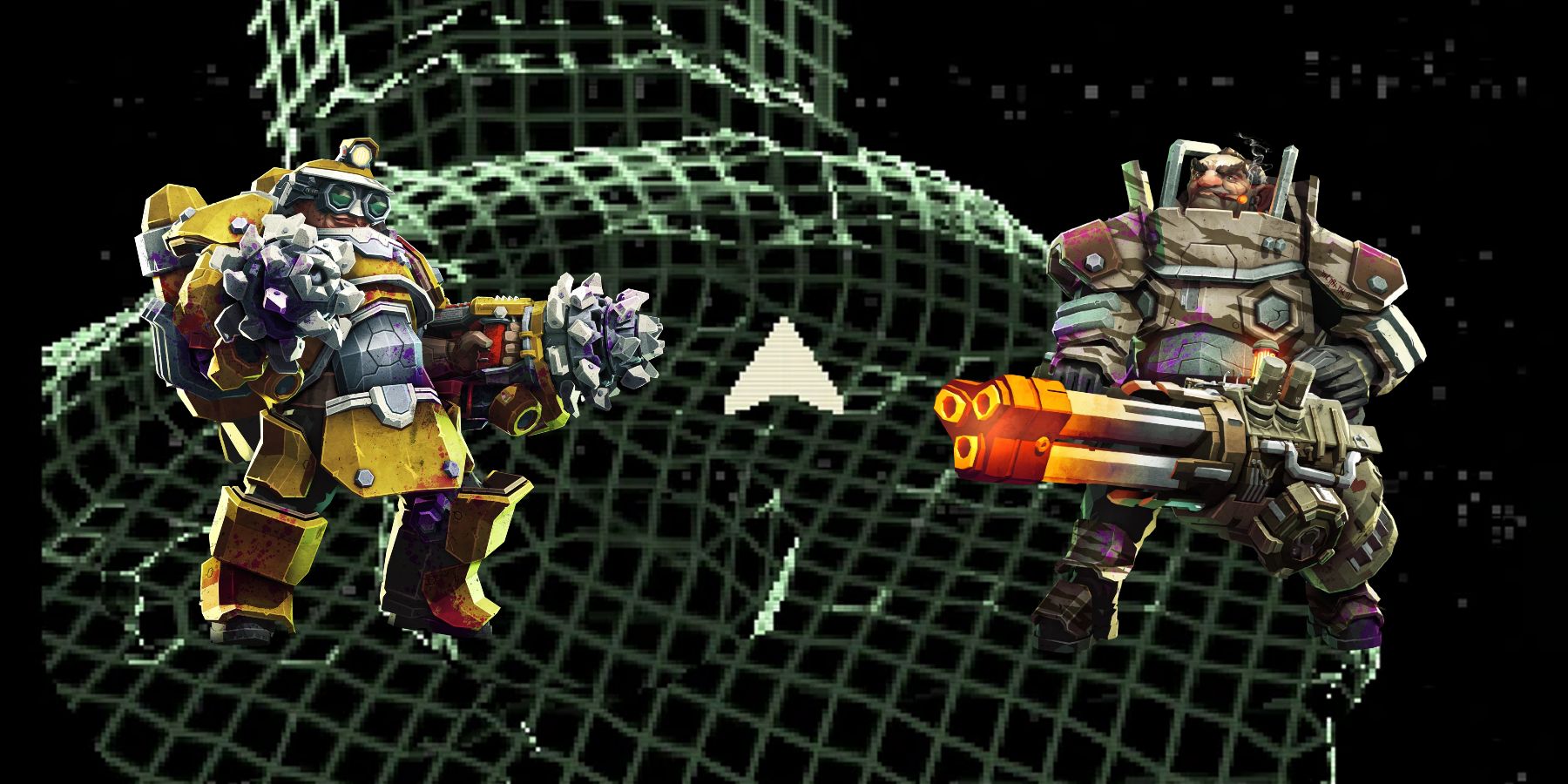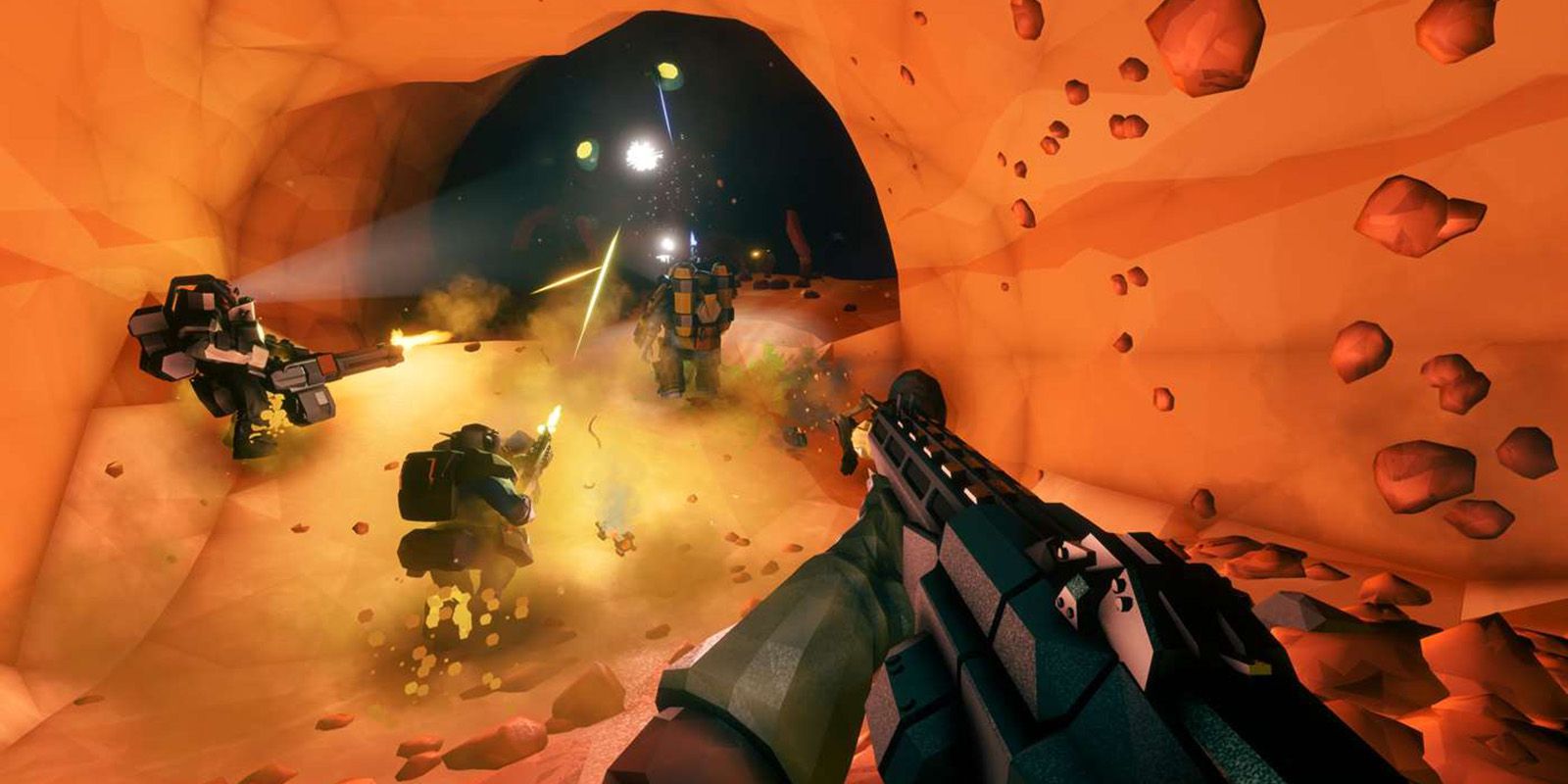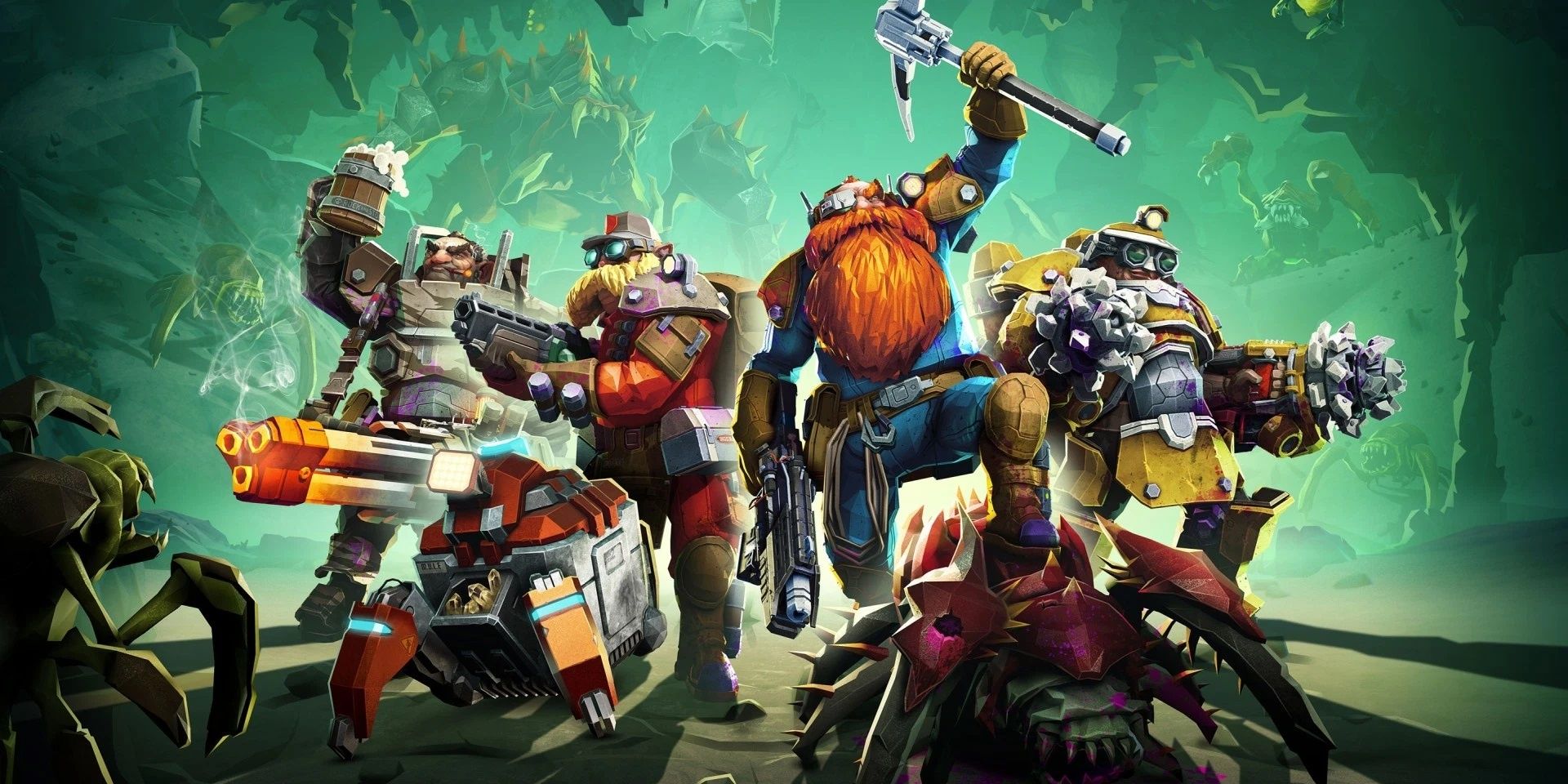Finding the best way to explore three-dimensional space is one of the consistent challenges that many game developers face. Unlike traditional 2D games where players can only move left, right, up, and down, the shift to 3D means there's a near-infinite amount of potential places someone can explore, and there is no widely accepted standard for how characters traverse. This issue can be compounded in games like Minecraft where a player may be exploring dark corridors underground without many options for pathfinding beyond trailing proverbial breadcrumbs. Deep Rock Galactic offers an effective solution to this problem.
Developed by Danish studio Ghost Ship Games and published by Coffee Stain, Deep Rock Galactic is something of a mix between co-operative first-person shooters like Left 4 Dead with the mining and explorative aspects of Minecraft. Players take on the mantle of a dwarf working for the sci-fi space mining company Deep Rock Galactic and have to complete various missions by diving deep into the mineral-rich planet Hoxxes 4. As dangerous as the planet's hostile alien insects can be, navigating the procedurally generated caves with a dwarf's capabilities may have been just as difficult if not for Ghost Ship's well-implemented Terrain Scanner tool.
Exploring Hoxxes' Depths in Deep Rock Galactic
The dwarves in Deep Rock Galactic are not the most agile or acrobatic avatars, even with perks that improve their ability to sprint. However, all four playable classes come with traversal-based support tools that work off one another to overcome measily jump heights and relatively slow mining with pickaxes.
The Gunner has ziplines that everyone in a party can use to cross gaps or ascend limited heights. The Driller's power drill lets them mine out larger square tunnels to connect rooms or bypass ledges entirely. The Engineer can shoot climbable platforms onto nearly all surfaces, allowing anyone to stand before high-up resources. Finally, the Scout has a grappling hook to cross long distances on their own or reach Engineer's platforms. Scout is also equipped with a flare gun that lights up large spaces.
With all these abilities combined on a team of four, almost no cavern in Hoxxes is insurmountable. However, there are still inherent challenges for navigation. No two dives are exactly the same, and caverns can be found with three tiers of both difficulty and complexity. At its most complex, the game may throw players into enormous spaces with resources tucked away on the ceiling, or long, winding narrow paths that sink deeper and deeper to reach pockets of open space. For those who get lost easily, this is where the Terrain Scanner comes in.
The Ease and Utility of Deep Rock Galactic's Terrain Scanner
Rather than having a mini-map visible at all times, Deep Rock Galactic players can activate their Terrain Scanner at any given time using a desired hotkey. Instead of a simple topographical map, the Terrain Scanner displays all the anthill-like inner workings of a cave in full 3D within a certain distance. This map can be maneuvered at will to see from multiple angles, and can be zoomed-in.
One of the challenges of navigating in a game like Minecraft is that the maps players build show a flat, 2D plane based on the surface - almost entirely useless underground except to show the relative distance between landmarks like a home base. One thing Deep Rock's Terrain Scanner has in common with Minecraft is that it can be activated at any point, and it displays updated information in real-time. This is particularly useful for certain mission types like escorting the Drilldozer, which automatically moves into new areas as players defend the machine from bugs and refill its gas tank. As players stand on the vehicle, one can watch their Terrain Scanner to see how close they are to the next cavern, as well as how big it may be.
There's plenty of additional information displayed on the Terrain Scanner. Players can see icons for themselves, their teammates, and any waypoints set down; other important icons for bulky minerals like compressed gold chunks; and mission-relevant goodies such as alien eggs or the resting place of boss-like Dreadnoughts. Unlike radars used to explore 3D environments in games like Halo, the Terrain Scanner gives players an idea of where to go on the Z-axis too - useful for Drillers hoping to go straight to an objective.
Ghost Ship also includes the random appearance of items that may augment what the Terrain Scanner displays. The Lost Pack is the most obvious example, giving players a new objective marker full of minerals and a customization item after they find a dead dwarf's discarded gear. With Update 35 still in development the Terrain Scanner could become more useful, but its current utility, ubiquity, and ease of readability makes it easy to imagine more games taking advantage of the same idea for navigation tech.
Deep Rock Galactic is available now on PC and Xbox One.



